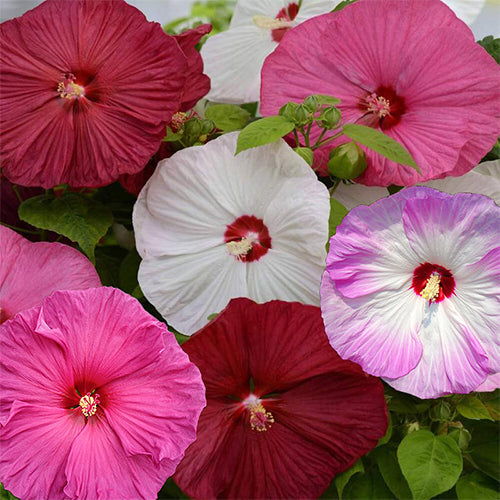
How To Grow Hibiscus From Seeds
Share
Hibiscus is a flowering plant native to warm subtropical and tropical regions world-wide.
These lovely and vibrant flowers come in a wide variety of colors and are prized for their ornamental value.
In this article, we'll provide an overview of Hibiscus plants and how to grow them from seeds.
Growing Hibiscus from Seeds
Growing Hibiscus from seeds is a fun and rewarding experience for gardeners and hobbyists. However, it's important to keep in mind that growing hibiscus from seed can be more challenging than growing it from cuttings or transplants.
Here's a guide on how to grow Hibiscus from seeds:
- Start Hibiscus seeds indoors: 6-8 weeks before the last spring frost date in your area.
- Soak Hibiscus seeds: in lukewarm water for about 8 hours to speed germination.
- Prepare a potting mix: Use a well-draining seed-starting formula and fill it into a container.
- Sow the Hibiscus seeds: ¼ inch deep in a seed-starting formula. Lightly cover the seed as they need light to germinate.
- Water the seeds: Keep the soil consistently moist but not soaked at 70-75 degrees F.
- Provide proper lighting: Hibiscus seeds require bright, indirect sunlight to germinate. You can place the container in a bright, sunny location, or use artificial light.
- Wait for germination: Hibiscus seeds typically take 2-3 weeks to germinate. Keep the soil moist and provide bright light during this time.
- Transplant the seedlings: Once the seedlings have grown to about 4-5 inches tall and have developed several sets of true leaves with the stems having begun to harden and become woody, the new Hibiscus plant can be moved to larger pots or to a protected place in the garden.
Caring for Hibiscus
Hibiscus plants are relatively easy to care for, as long as you provide them with the right conditions.
The following are some tips to help you take care of your Hibiscus plants:
- Light: Hibiscus plants thrive in bright, indirect sunlight. However, they can also tolerate some light shade.
- Water: Hibiscus plants prefer moist, well-drained soil. Water them regularly, but avoid overwatering.
- Fertilizer: Hibiscus plants benefit from regular fertilization. Use a balanced, all-purpose fertilizer every 2-3 weeks.
- Pruning: Regular pruning will encourage bushier growth and promote more flowers. Prune your hibiscus plants after they've finished blooming.
- Pests and Diseases: Hibiscus plants are generally healthy and resilient, but they can be prone to pests like spider mites and aphids. Regularly inspect your plants for signs of pest infestations and take action if necessary.
Conclusion:
Hibiscus plants are beautiful, easy-to-grow, and versatile. Whether you're growing them from seeds or transplants, you're sure to enjoy their vibrant blooms and lush foliage. With the right care, Hibiscus plants can thrive in your garden for years to come.
Get Hibiscus Seeds Here:
Hibiscus Syriacus Rose of Sharon
